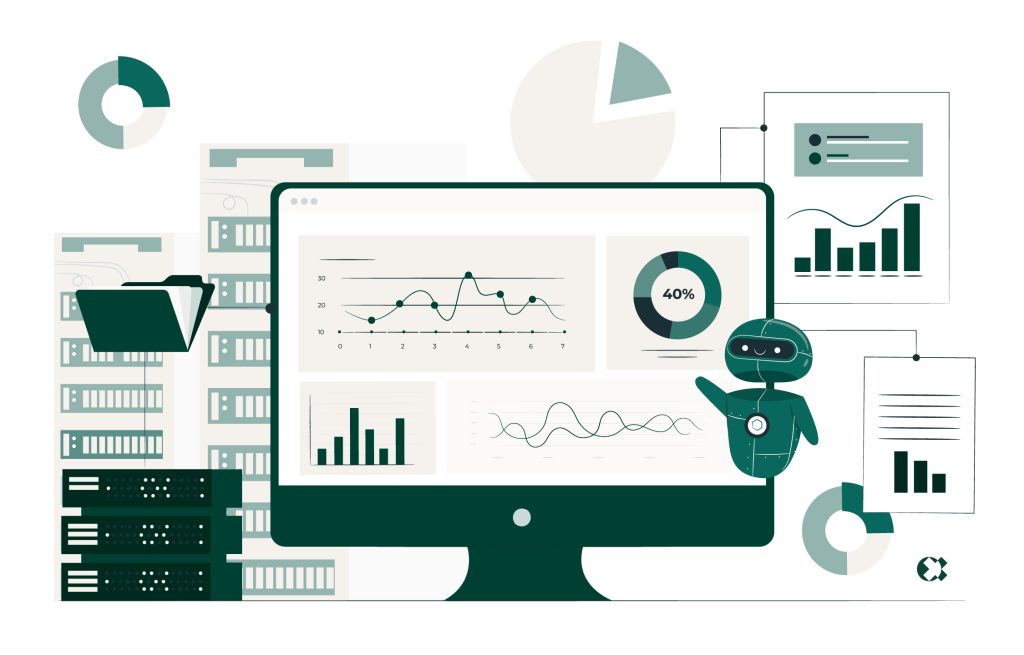Why Marketing Matters More Than Ever for Canberra’s Property Developers
Canberra’s property market is thriving, with new residential, commercial, and mixed-use developments constantly reshaping the city’s skyline. Yet, with opportunity comes competition. For property developers, marketing is no longer just about glossy brochures or a few print ads in local papers—it’s about cutting through the noise, connecting with the right buyers, and proving long-term value.
Related: Effective Digital Marketing Strategies for Canberra Property Developments
At one x, we are a leading marketing agency in Canberra who specialises in property marketing. We’ve worked closely with developers, real estate firms, and investment companies to help them overcome the unique challenges of marketing in the nation’s capital. From building standout brands to optimising digital funnels, we’ve seen firsthand what works—and what doesn’t.

Let’s dive into the most common Canberra property marketing challenges and provide actionable strategies you can apply right now. Whether you’re launching a boutique townhouse development, a major mixed-use precinct, or high-density apartments, the right marketing approach can transform your sales outcomes.
1. Market Saturation Challenges – Standing Out in Canberra’s Competitive Property Market
One of the biggest hurdles for property developers in Canberra is market saturation. With multiple projects launching simultaneously—often in the same suburbs—buyers are spoilt for choice.
The Challenge
- Oversupply of similar housing products (apartments, townhouses).
- Repetition in branding and messaging (everyone claiming “luxury living” or “prime location”).
- Buyers experiencing “decision fatigue” due to overwhelming options.
The Solution: Differentiation Through Storytelling
To stand out, you need more than just a sleek design or modern amenities. You need a brand story that resonates with buyers on an emotional level.
Strategies:
- Unique Value Proposition (UVP): Define what makes your development different. Is it sustainability, community focus, architectural innovation, or lifestyle convenience?
- Lifestyle Storytelling: Highlight the life buyers can envision, not just the bricks and mortar. For example, showcase family-friendly amenities, walkability to Canberra’s cultural hubs, or eco-friendly design for environmentally conscious buyers.
- Content-Rich Campaigns: Go beyond renders—use videos, testimonials, and VR walkthroughs to immerse buyers in the experience.
Read more: Craft a Winning Marketing Strategy: Essential Steps for Business Success
2. Targeting the Right Buyers – Identifying and Reaching Qualified Prospects
Even the most beautiful development will struggle if it’s marketed to the wrong audience.
The Challenge
- Developers often cast the net too wide, wasting ad spend.
- Misalignment between the development type and buyer demographics (e.g., promoting luxury penthouses to first-home buyers).
- Insufficient buyer personas or data-driven targeting.
The Solution: Precision Targeting with Data-Driven Insights
Instead of marketing to “everyone,” focus on qualified buyers most likely to purchase.
Strategies:
- Detailed Buyer Personas: Build profiles based on age, income, lifestyle, family structure, and motivations (e.g., downsizers seeking convenience vs. investors seeking yield).
- Geo-Targeting & Local Insights: Leverage Canberra-specific data—for example, appealing to professionals working in Parliamentary Triangle or Defence sectors.
- Digital Ad Segmentation: Platforms like Facebook Ads, Google Display, and LinkedIn allow hyper-targeted campaigns by demographics, interests, and online behaviours.
- Nurture Funnels: Use email marketing and remarketing ads to re-engage warm leads, not just chase cold audiences.
Read More: Effective Digital Marketing Strategies for Canberra Property Developments
3. Budget Allocation Issues – Maximising ROI Across Marketing Channels
Budget management is often one of the trickiest parts of property development marketing in Canberra. Developers know they need to spend—but where?
The Challenge
- Overspending on traditional media (print, billboards) with little trackable ROI.
- Underutilisation of digital channels that provide measurable results.
- Lack of clarity on which touchpoints actually drive conversions.
The Solution: Balanced, ROI-Focused Marketing Mix
Every dollar should be traceable back to performance.
Strategies:
- Channel Attribution: Track which platforms (social, search, outdoor, events) actually generate qualified leads and sales.
- Digital-First Approach: Shift budgets toward measurable channels like Google Ads, SEO, and paid social.
- Phased Rollouts: Start with digital campaigns to generate early leads, then layer in traditional media as brand awareness grows.
- Continuous Optimisation: Test creative, messaging, and formats to identify what converts best.
At one x, we build ROI dashboards for our property clients, giving them full visibility into which campaigns drive genuine returns.
4. Regulatory Compliance – Navigating Australian Property Advertising Laws
Property marketing in Australia comes with strict regulations, and non-compliance can result in hefty fines.
The Challenge
- Misleading claims in property advertising.
- Use of unverified images or renderings.
- Not disclosing key terms and conditions.
- Failing to meet Australian Competition and Consumer Commission (ACCC) guidelines.
The Solution: Compliance-First Marketing Practices
Marketing doesn’t just need to be effective—it must also be legally sound.
Strategies:
- Accurate Representations: Avoid exaggerating amenities or misrepresenting locations.
- Clear Disclaimers: Always include T&Cs, especially around pricing, availability, or incentives.
- Professional Oversight: Work with agencies (like one x) that understand property compliance in Australia.
- Team Training: Ensure your sales and marketing teams are aligned on compliance requirements.
5. Digital Presence Gaps – Building Effective Online Marketing Funnels
Many property developers still rely heavily on traditional marketing, leaving digital opportunities untapped.
The Challenge
- Outdated websites with poor UX.
- Limited presence on search engines.
- No lead capture or nurturing funnels.
- Lack of trust-building content.
The Solution: End-to-End Digital Ecosystem
Buyers begin their property journey online. If you’re not visible and engaging digitally, you’re missing out.
Strategies:
- Conversion-Optimised Websites: Fast, mobile-friendly, with clear CTAs (book a viewing, request brochure).
- Search Engine Optimisation (SEO): Rank for terms like property development marketing Canberra or Canberra apartments for sale.
- Content Marketing: Publish blogs, suburb profiles, and investment guides that build authority.
- Marketing Automation: Use CRM tools to nurture leads automatically with personalised emails, updates, and offers.
- Virtual Tours & 3D Renders: Let buyers experience your project online before stepping foot onsite.
Read More: The Role of Project Marketing in Successful Property Developments in Canberra
6. Local Market Understanding – Leveraging Canberra-Specific Market Insights
Canberra isn’t Sydney or Melbourne. Its property market has unique dynamics shaped by government employment, universities, and population trends.
The Challenge
- Developers using cookie-cutter strategies from larger cities.
- Ignoring the nuances of Canberra’s buyer base.
- Misreading demand patterns in suburbs.
The Solution: Hyper-Localised Marketing Approach
Success lies in tailoring strategies specifically to Canberra.
Strategies:
- Market Research: Analyse Canberra-specific buyer behaviour, income levels, and suburb growth.
- Lifestyle Mapping: Highlight proximity to government hubs, universities, and lifestyle precincts like Braddon or Kingston Foreshore.
- Localised Campaigns: Use Canberra-centric visuals, language, and references that resonate with local buyers.
- Community Engagement: Sponsor local events or collaborate with Canberra influencers to build trust.
Why one x is the Go-To Property Marketing Agency in Canberra
The Canberra property market offers immense opportunity — but only for developers who can overcome its marketing challenges. From standing out in a saturated market to building compliant, digital-first campaigns, success requires strategy, precision, and local expertise.

At one x, we specialise in property development marketing in Canberra. Our team understands the nuances of the local market, the importance of compliance, and the power of digital to drive results.
If you’re a property developer looking to attract qualified buyers, maximise ROI, and future-proof your marketing, we’re here to help.
Book a free consultation with one x today and discover how we can transform your next property development campaign into a sales success story.









